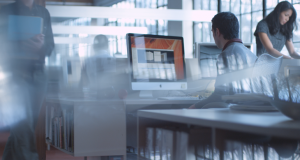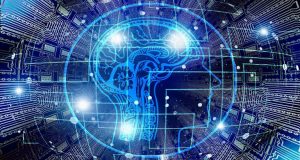 As new technologies like IoT and AI change and develop rapidly, so does the risk landscape for the modern workplace
As new technologies like IoT and AI change and develop rapidly, so does the risk landscape for the modern workplaceAs more businesses invest in surveillance technology to monitor and track employees in the workplace, questions are raised around whether the benefits override growing concerns around digital ethics, and if employers truly understand the privacy implications.
With new technological developments continuing to transform the world of work, Instant Offices delves into how companies can adapt to make sure these concerns and risk are managed.
Research by Gartner found that 22% of organisations around the world are using employee-movement data, 17% are monitoring data on how employees use their work computers, and 16% are using data on Outlook and digital calendar usage.
They said the matter of digital ethics and privacy is “a growing concern for individuals, organisations and governments.” While analysts state that, “people are increasingly concerned about how their personal information is being used by organisations in both the public and private sector, and the backlash will only increase for organisations that are not proactively addressing these concerns.”
As new technologies like IoT and AI change and develop rapidly, so does the risk landscape for the modern workplace. Failure to protect data from cyberattacks and leaks can lead to financial and reputational damage to a business. BYOB (Bring Your Own Device) policies, where employees conduct business on their personal devices, also leave organisations vulnerable to security breaches. This is particularly concerning as research found by Instant Offices shows 67% of employees say they now use personal devices at work.
HR Strategies for Managing Digital Risks
Here are a few proactive ways that businesses can address potential concerns around digital ethics, employee privacy, and cybersecurity.
Make Data Protection a Priority:
It should go without saying that systems like encryption, authentication and backup must all be in place in order to protect sensitive data.
Harness New Technologies:
Artificial intelligence and machine learning are being developed to help improve threat detection. Look to smart emerging technologies that will help to strengthen your cybersecurity measures.
Conduct Security Awareness Training:
Make sure your staff are all informed about potential security risks and how to avoid them. Include training in the onboarding process that will help to curb the risky behaviour that leads to security breaches.
Be Open about Surveillance:
Be transparent about what is being monitored and how this data is being used. Create company policies to ensure that data is being used responsibly and ethically, and make sure employees are informed about this.
Leading Tech Trends in the World of Work
So, what are some of the other ways technology is transforming the workplace? Here are a few key tech trends in the modern workplace for 2019 and beyond:
AI-Driven Development:
Rather than data scientists needing to partner with application developers to create AI-enhanced solutions, there is a trend towards developers using predefined models to create AI applications on their own. It is predicted that by 2022, at least 40% of new application development projects will include AI co-developers on their team.
Blockchain:
Blockchain is a system of recording cryptocurrency transactions. As these systems mature and user trust grows, Blockchain will provide a workable alternative to central authorities like banks, simplifying transactions and minimising hidden costs.
IoT:
More and more office devices are now connected to the “Internet of Things”, and this connectivity is constantly changing and improving workflow. Think smart sensors that can monitor the temperature of servers, or schedulers that help you to coordinate coworking and conferencing spaces. Smart, connected devices are allowing us to track every “moving part” of our workflow, making it more efficient.
Reduced Bureaucracy:
Time-consuming administrative processes are on the way out. Automation in the modern digital workplace is making work processes smoother, quicker and more action-oriented. It’s all about boosting productivity and efficiency.
Smart Spaces:
Think of these as smart cities on a smaller scale. Smart spaces are physical or digital environments where people interact with technology-enabled systems in increasingly connected, intelligent and immersive ecosystems. Digital workspaces are growing in leaps and bounds as more employers embrace the benefits of remote working.
Recruiters love this COMPLETE set of Accredited Recruitment & HR Training – View Training Brochure








